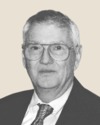Opponents of longitudinal installations are concerned about scenery, roadside safety, access, maintenance and durability, among other issues. But these obstacles can be overcome.
For instance, in December 2010, the Wisconsin DOT revised its policy to allow electric transmission facilities to be installed longitudinally on freeway right-of-way.
Where Federal laws allow longitudinal installations of transmission lines for renewable energy, production installations may be more difficult to justify, but not impossible.
A great example is the Oregon Dept. of Transportation (ODOT). Using a public-private partnership coupled with private financing, tax credits and public investment, ODOT completed in 2008 the nation's first solar demonstration project located on a freeway right-of-way. Through a net-metering agreement with the utility, which owns the array, the power is used to light the I-5 / I-205 interchange in Portland. A second project along Interstate 5 south of Wilsonville broke ground in August.
During his campaign and in the early days of his administration, President Barack Obama held out a vision of a modernized electrical grid that could transmit green electrical power anywhere it was needed. Not enough has been done. To jump-start America's leap into renewable energy, I urge state DOTs to work together to share ideas and successes, FHWA and AASHTO to provide needed research and guidance, and the power industry to identify its needs and initiate discussions with federal and state highway officials. There are compelling environmental and economic reasons to get this energy where it will be used.
Paul Scott is chairman of the Transportation Research Board of the National Academies Committee on Utilities. He can be reached at Paul.Scott@cardno.com. 

Post a comment to this article
Report Abusive Comment